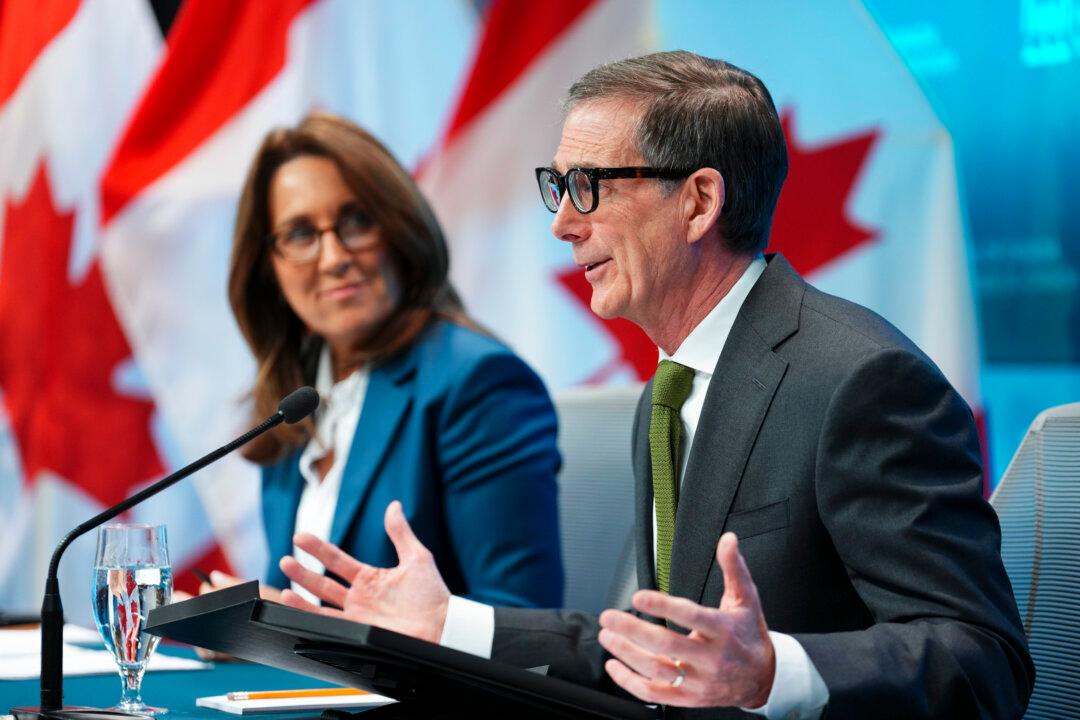Inflation is proving to be a thornier issue than central banks once thought. With soaring energy prices, the more troubling economic prospect of stagflation reminiscent of the 1970s has entered the discourse in financial markets; however, analysts say that risk is minimal.
Stagflation is generally thought of as inflation above the central bank’s target range while the economy slows or contracts—economic stagnation with rising inflation.
Stagflation puts central banks in a quandary, as raising interest rates to fight inflation would only dampen economic growth further. For households, stagflation makes everything cost more while their incomes decrease as unemployment rises.
As earlier in the year when Google searches for “inflation” reached an all-time high, searches in Canada, the United States, and the United Kingdom for “stagflation” have started trending higher.
In Deutsche Bank’s October 2021 survey of over 600 market professionals from around the world, the consensus is that stagflation of some kind—three versions of it were posited—is more likely than not over the next 12 months.
Nevertheless, Deutsche Bank’s head of thematic research Jim Reid said he thinks the term “stagflation” is being used “too aggressively at the moment.”
BMO senior economist Sal Guatieri told The Epoch Times that the stagflation risk is limited since the demand fundamentals in Canada’s economy are solid. He points out that households are sitting on excess savings, wealth from elevated stock markets and housing remains high, interest rates are extremely low, and the government is spending.
“You would also need some kind of adverse demand shock—could be an equity market correction, a housing market correction that hammers demand, so you end up then with weak economic growth, and possibly a contraction that sends your unemployment rate higher,” he said.
“It won’t be your father’s thing—stagflation. We’re not going back to the 1970s era of double-digit jobless rates and inflation rates.”
Back then, oil prices skyrocketed and inflation followed suit. It peaked at over 12 percent in late 1974. The economy hit a recession in the early 70s and growth fell close to zero.
On Oct. 11, crude oil surpassed US$80 a barrel—its highest level since late 2014.
Canada’s inflation was up 4.1 percent for the year ending in August—an 18-year high—and some economists say this official figure underestimates the true cost of living. Canada’s economy contracted by 0.3 percent in the second quarter; however, that was largely due to lockdowns.
What is working in Canada’s favour is that economic growth is projected to remain robust for the near term. The International Monetary Fund published its economic outlook projections on Oct. 12 and estimated that Canada’s economy will grow 5.7 percent in 2021 and 4.9 percent in 2022.





